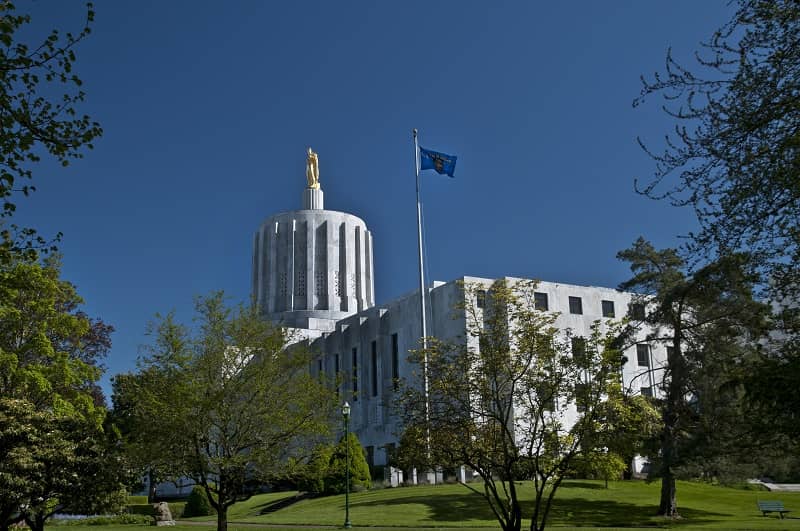By Christopher Robinson
So-called “sustainable development” is a longtime political interest in the city of Portland. Although the term itself is never defined, the concept implies the use of “green” design and technologies in order to reduce energy consumption, water use, solid waste and automobile travel. The loftiest goal is “net zero,” whereby all electricity and water needs are met from on-site generation and no outside sources are necessary.
One such “sustainable” project is the EcoFlats apartment building located on North Williams Avenue in Portland’s Boise neighborhood. Recently, the development received a good deal of media coverage due to its implementation of green technologies and an “affordable” price tag. EcoFlats has no interior hallways, no air conditioning, a large roof top solar array and the goal of net-zero energy usage. On the surface it would seem an excellent model for future affordable, sustainable development; but an extensive back-story to EcoFlats’ financing and planning reveal otherwise.
First, EcoFlats’ location is no coincidence. Although promoted as a bicycle commuter friendly location (North Williams Avenue is considered a major “bicycle thoroughfare”), it is within the Portland Development Commission’s (PDC) “Interstate Corridor Urban Renewal Area.” This means businesses and developers can receive subsidies from PDC. EcoFlats sits on land previously occupied by a small equipment repair shop, which was considered underutilized space. In order to aid redevelopment, PDC provided the developer with a $740,000 commercial loan representing roughly 23% of the total project cost. Loans approved by PDC are intended to close financial gaps and may have reduced interest rates if applicants meet certain requirements, such as using sustainable technology.
In addition to the incentives from PDC, the developer also applied for Oregon’s business energy tax credit. The program covers up to 50% of costs towards the purchase of certain technologies. These include high-efficiency combined heat and power projects, such as the $200,000 solar array on top of the building.
The estimated costs are misleading. Tenants pay the energy costs for their residence, so the tax credit only benefits the developer. Proponents argue that energy costs will be lower because the building produces its own energy, cancelling out the cost of solar panels. However, the solar panels are subsidized by taxpayer money. All Oregonians, including the tenants, are footing the bill.
Furthermore, the developer of EcoFlats was not required to build any off-street parking for the building, a significant subsidy that allowed for more revenue-generating units. The developer received a parking exemption because North Williams Avenue is considered a “transit street” because it has a TriMet bus route. However, the majority of tenants likely will own an automobile, meaning the surrounding neighborhood will have to bear the burden of increased on-street parking.
Finally, EcoFlats is part of Energy Trust of Oregon’s “Net Zero” pilot program. The Energy Trust is a non-profit organization funded through a three percent, state-mandated surcharge on customers of the state’s largest energy suppliers, including PGE, PacificCorp and NW Natural. The Energy Trust works to promote reduced energy use by providing incentives from the money they collect. Projects enrolled in their “Net Zero” pilot are eligible to receive up to $575,000 in various incentives. The goal is to achieve net-zero energy consumption through careful planning and implementation of new technology. Again, however, the benefits are concentrated in developments such as EcoFlats, while the cost is spread across all who pay the three percent energy surcharge.
In total, EcoFlats has $1,415,000 in potential and realized subsidies, representing roughly 44% of the total project cost. Yet, even with these subsidies, the rents are very high for the local market. Portland Housing Bureau designates the Boise neighborhood as a low-moderate income community. Rent for 600- and 750-square-foot apartments at EcoFlats are $1,000 and $1,500 a month, respectively. This means it does not meet the requirements of low-moderate income families for affordable housing, which should represent less than 30% of gross annual income. Current Boise neighborhood residents are effectively priced out of the development.
There are clear winners and losers here. The 18 residential units and two commercial spaces are filled, which is good for the developer. The City of Portland wins, because they now collect almost double the property taxes on the land. The Energy Trust wins, because they can claim more energy savings, though whether or not the building ever achieves its net-zero energy goal will depend on the usage of the tenants. It will require a conscious effort in order to do so, and actual performance is likely to lag the estimated performance.
Oregon taxpayers and all who pay the Energy Trust surcharge are the big losers. They are required to make up the difference in costs for “sustainable development” but receive none of the touted benefits. EcoFlats is only one in a long list of heavily subsidized projects which have increased in number in recent years. Eventually, people will realize that “sustainability” in Portland is not about helping the environment, but rather about creating an image that only benefits a select few.
Christopher Robinson is a research associate at Cascade Policy Institute, Oregon’s free market public policy research organization.











